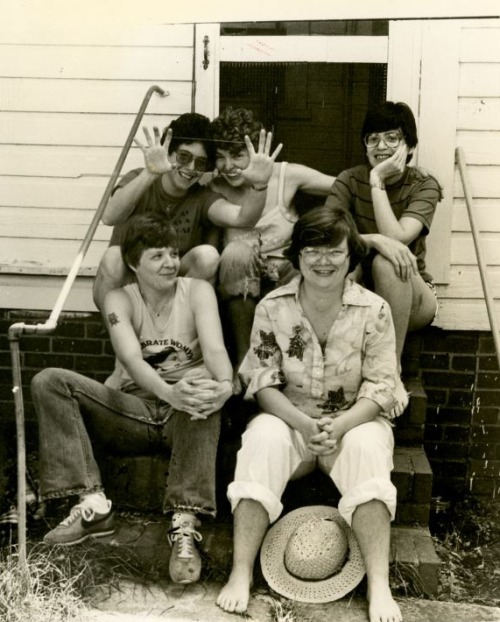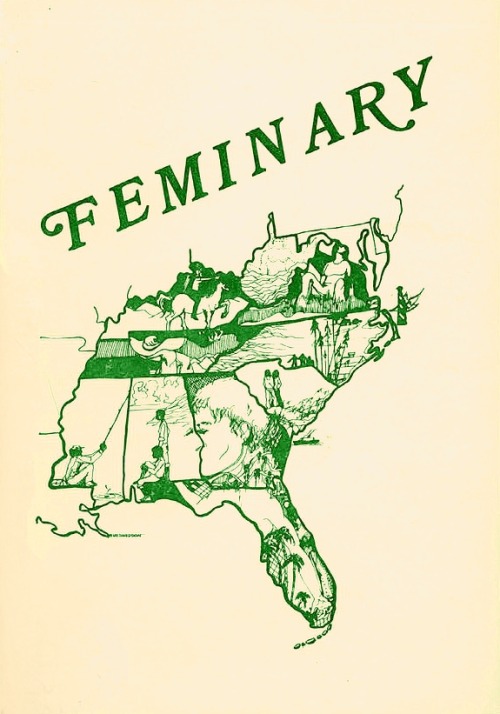Top: The Feminary Collective in 1982: Helen Langa (top left), Minnie Bruce Pratt (center), Eleanor H
Top: The Feminary Collective in 1982: Helen Langa (top left), Minnie Bruce Pratt (center), Eleanor Holland (top right), Cris South (bottom left), and Mab Segrest (bottom right). Photo by Elena Freedom. Duke University Libraries.Covers: Vol. 10, No. 1 (1979), Vol. 8, No. 1 (1977), Vol 11, No. 1 & 2 double issue (1980), and Vol. 8, No. 2 (1977).Bottom: Feminary Collective statement (1979). “… We want to provide an audience for Southern lesbians who may not think of themselves as writers but who have important stories to tell — stories that will help to fill the silences that have obscured the truth about our lives and kept us isolated from each other. We want to know who we are. We want to change women’s lives.” Duke University Libraries. “You don’t think of concepts being brought to life in the midst of fruit salad, tea glasses, and sandy bare feet, on the screened porch of a beach cottage. I have always imagined the ‘birthing’ of new ideas as taking place in a more ethereal, glamorous setting and manner. Perhaps the new concept for Feminary, as a Southern literary journal rather than a local feminist publication, came into existence because of our own stubborn ways of being and doing; two native Alabamians, two native North Carolinians, all devotedly, doggedly Southern in our outlooks and attitudes. So four collective members, Mab, Susan, Minnie Bruce, and I, sat among the bowls of food, propped ourselves in fold-up chairs on the porch of a rented beach cottage, in the hot, humid summer air, and made the decision to radically change the depth and focus of Feminary in an effort to reflect and preserve this part of the country and our Southern sisters, to all of which we are so attached by both our collective heritage, and by our individual emotional ties.“The South has been an embroiled, tumultuous area from the days of plantations and slavery of the 1700-1800s, to the civil rights movements of the 1960s, but in the midst of the stereotyping and problems, a powerful tradition of Southern womanhood is being seen and felt. And all of us on the collective have felt a strong need to pull the lives, the thoughts, the stories, and the visions of Southern women out of the murky, weak, scatter-brained image most people have of us. A point of reclamation is at hand for many of us and in spite of our own ambivalences about this area in which we live, we all feel an immense pride in and love for the women around us, our friends, lovers, mothers, grandmothers, aunts, cousins, sisters, for the stories we have heard and have re-told, for the particular sort of richness we have found in our own lives and backgrounds.”— Cris South, in Sinister Wisdom No. 13 (1980). -- source link
#feminary#lesbian publishing#feminist publishing#lesbian herstory





